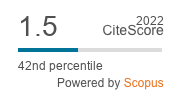Sport horses frequently injure tendons of the lower limb. Tendon boots are commonly applied for structural support and trauma prevention during competitions. However these boots may increase heat stress in the area. Two separate studies were carried out with the aim to improve understanding of the effect of boots on heat around the tendon area. Study 1 measured heat emitted from two types of boots (traditional and perforated, cross-over design) covering the superficial digital flexor tendon in 4 horses during a set ridden and lunged exercise test. Study 2, a field test, measured the effect of boot style (traditional, perforated and open fronted) on skin surface temperature in 130 horses, after completing a cross country event test (either a BE 100 three day event or a CIC* - two day short format event). An infrared thermometer was used to measure temperatures during both studies. Boots designed with perforations demonstrated greater heat emissions than traditional (non-perforated) boots (+3.5 ° C, P<0.01). In Study 2 mean tendon surface temperature for perforated type boots (28.0 °C) was significantly lower than for traditional boots (32.3 °C) and for open fronted tendon boots (31.1 °C) (P<0.001). As this was an applied field study, additional environmental factors, such as speed and fitness level of horses, may have influenced results. Although exact mechanisms leading to these findings and the link between heat and tendon injury needs to be researched further, it is advisable to design boots to minimise tendon exposure to high temperatures, which may contribute to tendon injury.
Research-Article
The influence of boot design on exercise associated surface temperature of tendons in horses
L. Hopegood Related information
1 School of Animal, Rural and Environmental Sciences, Nottingham Trent University, Brackenhurst, Southwell, Nottinghamshire, NG25 0QF, United Kingdom
, L. Sander Related information2 Hofgut Beutig 1, 04749 Ostrau, Germany
, A.D. Ellis Related information3 UNEQUI, Research, Education and Innovation, Southwell, NG25 0DS, United Kingdom
Comparative Exercise Physiology: 9
(3-4)- Pages: 147 - 152
Published Online: December 17, 2013
Abstract
Keywords: heat, equine, protective equipment, thermal imaging
2023 Journal Impact Factor
0.9
source: Journal Impact Factor 2023™ from Clarivate™

Institutional Offers
For institutional orders, please contact [email protected].
Purchase Options
-
-
-
A. Byström, H.M. Clayton, E. Hernlund, M. Rhodin and A. Egenvall
-
L. Wright, E. Hernlund, C.T. Fjordbakk, B. Ytrehus, E. Law, M. Uhlhorn and M. Rhodin
-
Jane Williams and David Marlin
-
P.S. Rejeki, A. Pranoto, R.E. Prasetya and S. Sugiharto
-
A. Byström, H.M. Clayton, E. Hernlund, M. Rhodin and A. Egenvall
-
A. Andarianto, P.S. Rejeki, , A. Pranoto, T.W. Aga Seputra, and M. Miftahussurur
-
E.J. Hall and A.J. Carter
-
L. St. George, S.H. Roy, J. Richards, J. Sinclair and S.J. Hobbs



